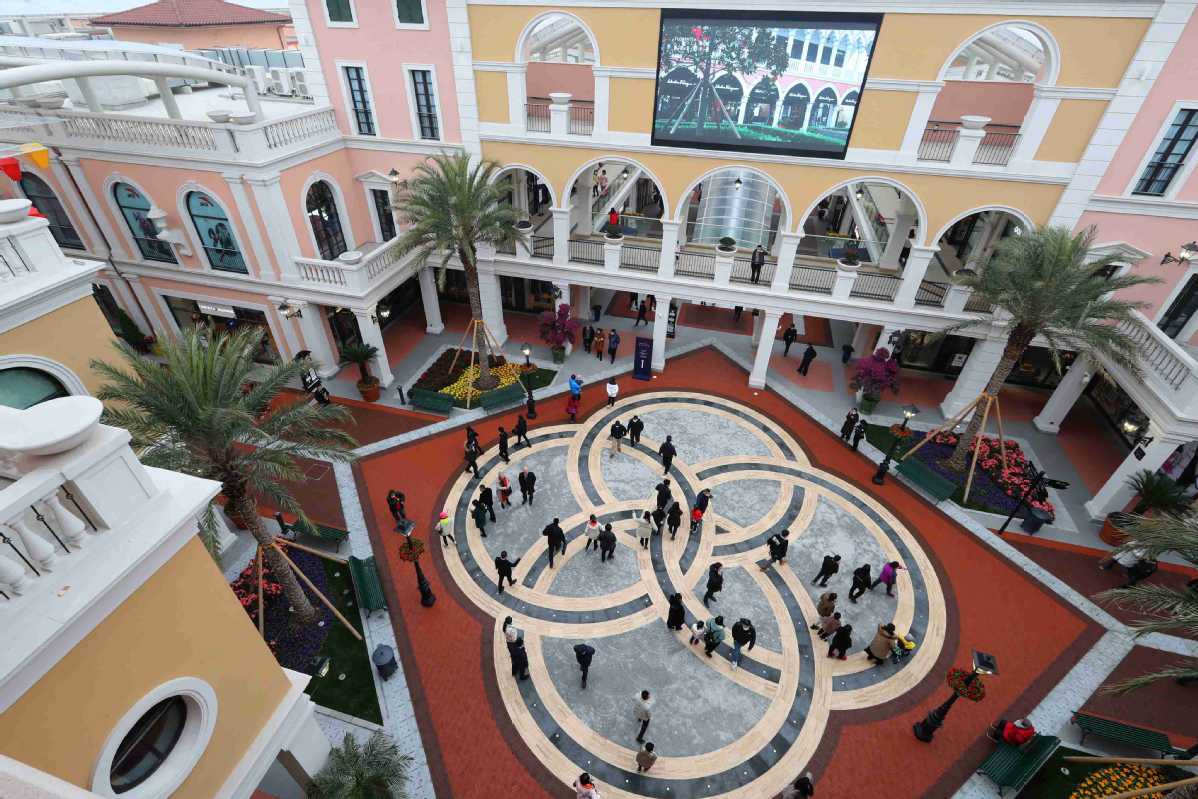Outlet plazas make waves in retail sector
By LIU YUKUN | China Daily | Updated: 2021-02-18 09:24

If there is one thing everyone loves, it's a good deal.
That's why outlet plazas, or factory outlets in China survived and even boomed amid the COVID-19 pandemic last year, while most stores and shopping malls across the country struggled through hard times.
According to data from outletscn.com, a total of 39 outlet plazas have seen their sales surpass 1 billion yuan ($154.9 million) each in 2020, while the number for 2019 was 34. Total sales from these 39 outlet plazas across China exceeded 80 billion yuan last year, up from over 70 billion yuan from the 34 outlet plazas in 2019.
Bailian Outlets Plaza, located in Qingpu district, Shanghai, topped the list with annual sales of 4.65 billion yuan. It was followed by Florentia Village (Beijing and Tianjin) whose sales were 4.3 billion yuan, and Capital Outlets in Beijing whose sales stood at 3.5 billion yuan.
Liu Ronghuan, a frequent shopper to outlets in Beijing, said she was surprised to see an outlet plaza packed with consumers during the National Day holiday. "It seems that fewer people think of social distancing when seeing new products on shelves with lower-than-expected prices."
Liu said she visited outlet plazas even more often than previously. "I observed there are a lot more products in the stores, some of which were even trending in the season, which is an important attraction for me. In addition, the outlets have many recreational facilities and restaurants, which make it a good choice to kill time with friends."
According to a report on news website Jiemian.com, high quality goods and lower prices are an important reason outlet plazas have been attracting consumers.
Neil Wang, president of consultancy Frost & Sullivan China, said that outlet plazas, are brick-and-mortar venues in which manufacturers sell their stock at much lower prices to the public, because many of their products are either outdated or in clearance. Wang said the business model has extended the distribution chain and relieved manufacturers from the pressures of overstocking.
"Many high-end brands have very strict rules on the number and category of products that go to outlet stores to protect brand value, so it is often the case that their outlets stores have very limited products," Wang said.
But since the COVID-19 pandemic caused a severe impact on the overall global retail market, many global sports and fashion brands have seen increasing stocks and put more products on sale in their outlet stores, according to the Jiemian report.
The Jiemian report also pointed out that many people were restricted from traveling due to COVID-19, while outlet plazas have multifunctions including shopping, dining and even picnics as many are located in suburban areas and have become a popular choice of entertainment.
The outlet market in China started booming years ago. From 2002 to 2010, the average annual growth rate of the number of newly opened outlets was 8 percent, while the growth rate for 2011-2015 was 17 percent. As of March 2019, the total number of outlet plazas in China reached 189, according to data released from the China Outlets Industry Development Forum.
A report from outletscn.com said that the industry has developed rapidly in recent years. It said a majority of outlets in first-tier cities are owned or operated by leading companies and the market in those cities is approaching saturation. Hence, industry leaders are actively seeking more business opportunities in second-tier cities.
"The industry is also facing challenges from the boom of online shopping and cross-border e-commerce, which also offer good discounts and are convenient for shoppers. Going forward, outlet plazas may consider inviting more domestic brands, targeting various groups of consumers, to generate new growth points," Wang said.
























